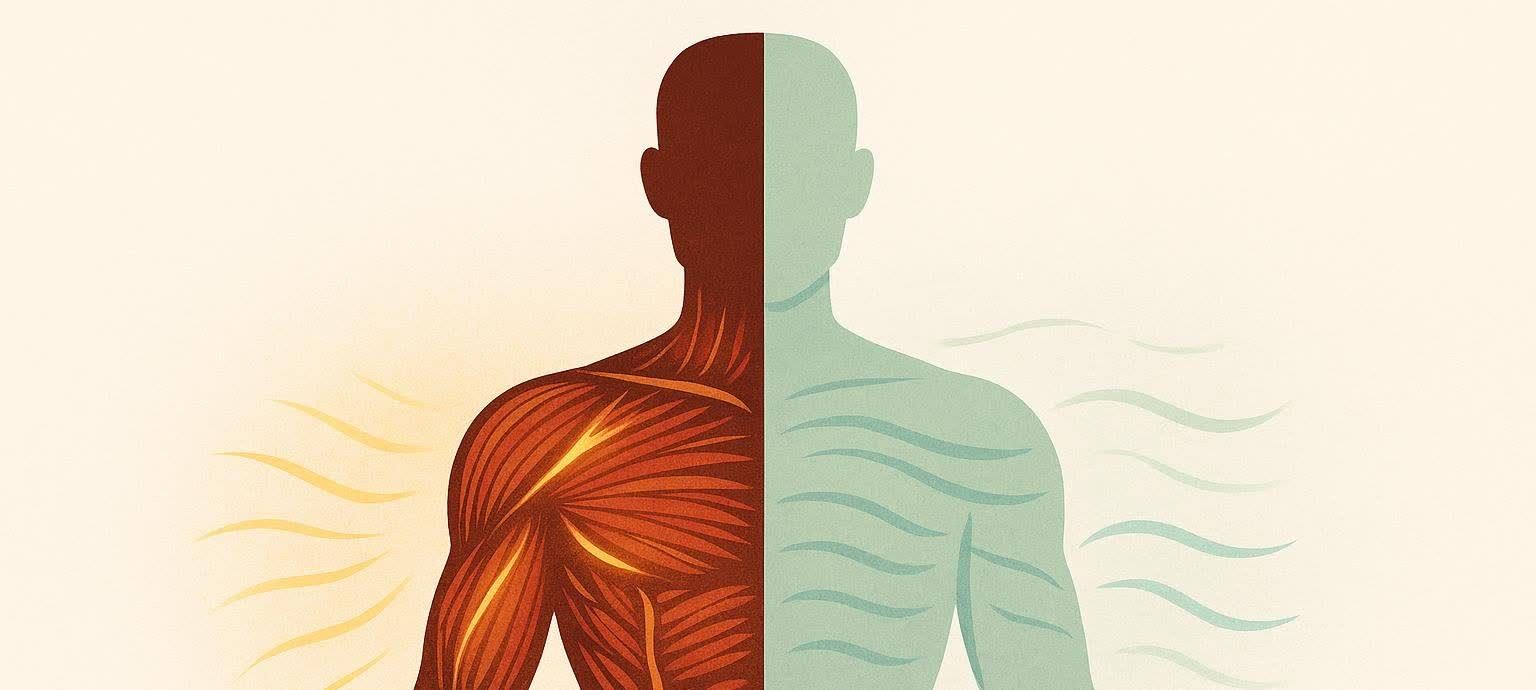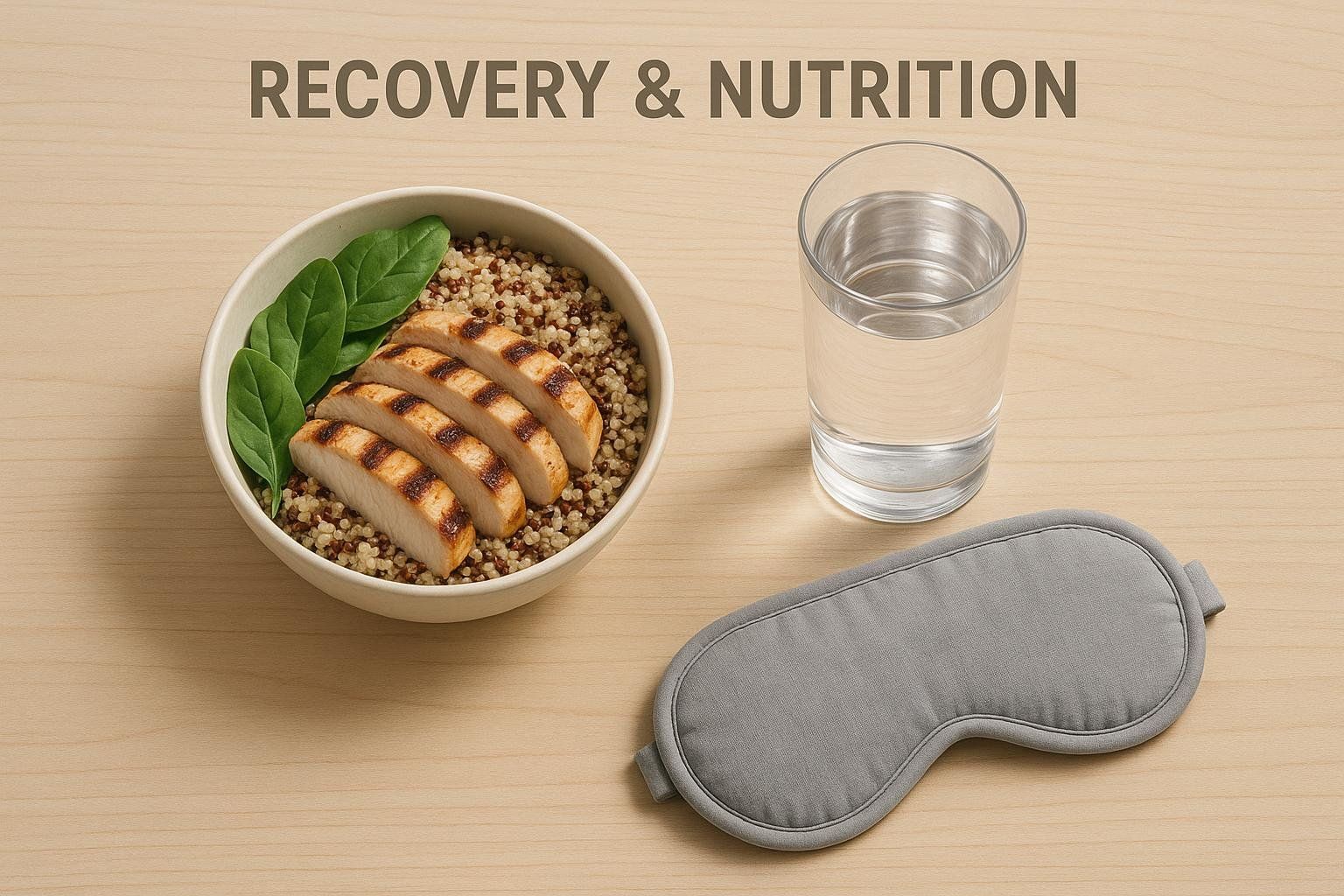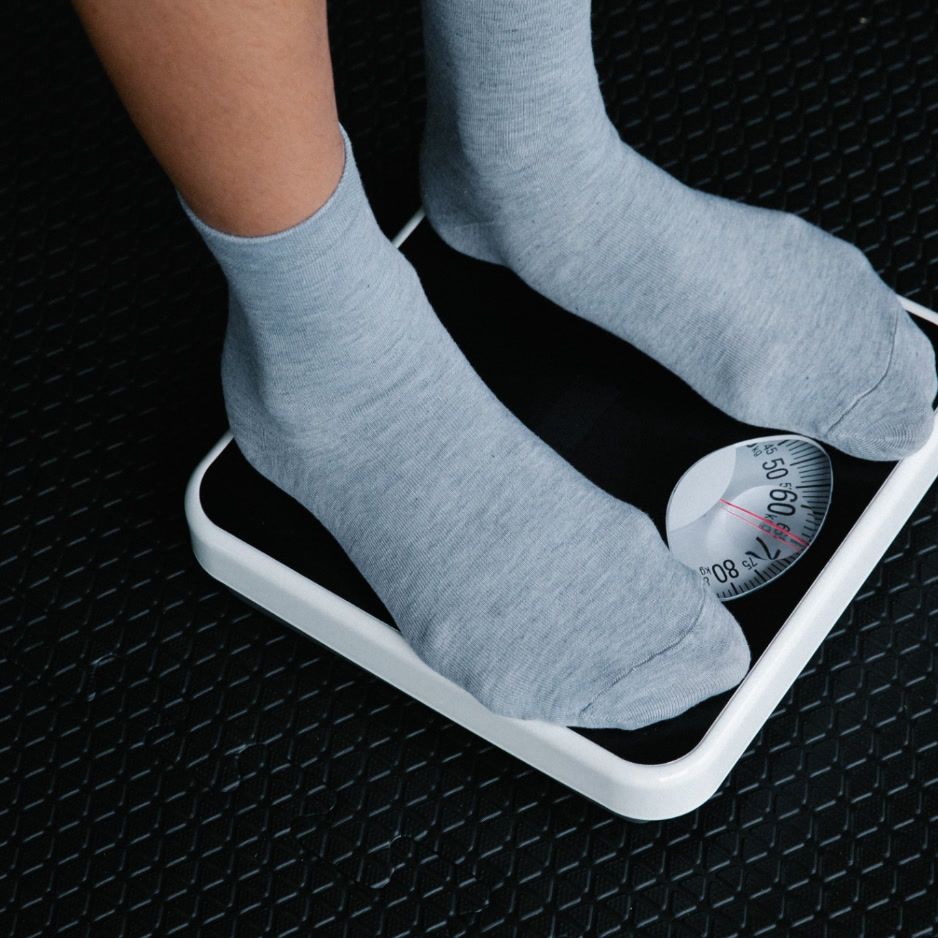4-Day Workout Split: Guide & Templates

4-Day Workout Split: Ultimate Guide & Templates
A four-day training week strikes an ideal balance: it provides enough sessions to stimulate each major muscle group twice without demanding so much time that work, family, or social commitments suffer. This guide compares the most popular 4-day splits, shows you how to progress them over eight weeks, and gives you workout templates so you can hit the gym tomorrow.
Why a 4-Day Split Works
- Proven frequency for growth. Meta-analyses show that training a muscle group at least two times per week produces superior hypertrophy compared with once-weekly sessions (Schoenfeld et al., 2016).
- Ideal recovery window. Guidelines recommend 48 hours between sessions for the same muscle group—exactly what a Mon/Tue–Thu/Fri 4-day split provides (ACSM Position Stand, 2009).
- Lifestyle-friendly. Four workouts that each run 45–60 minutes fit easily around work and weekend plans.

Which 4-Day Split Is Right for You?
Below is a quick-scan matrix comparing the four most common structures.
| Split Type | Weekly Frequency Per Muscle | Session Length | Ideal For | Example Schedule |
|---|---|---|---|---|
| Upper/Lower | 2× | 60 min | Balanced strength, hypertrophy, beginners | Mon – Upper A • Tue – Lower A • Thu – Upper B • Fri – Lower B |
| Push/Pull | 2× | 60 min | Intermediate hypertrophy, shoulder health | Mon – Push A • Tue – Pull A • Thu – Push B • Fri – Pull B |
| Bro/Body-Part | 1× | 45 min | Advanced lifters, physique focus | Mon �– Chest + Tris • Tue – Back + Bis • Thu – Legs • Fri – Shoulders + Abs |
| Hybrid Athletic | 2× major, 1× accessories | 50 min | General fitness, conditioning | Mon – Full-Body Strength • Tue – Conditioning/Core • Thu – Full-Body Power • Fri – Mobility/Accessory |

Day-by-Day Templates
All set prescriptions are written as sets × reps. AMRAP = as many reps as possible.
1. Upper/Lower Split

Day 1: Upper A (Strength Emphasis)
- Bench Press — 4×5
- Barbell Row — 4×6
- Overhead Press — 3×6
- Lat Pulldown — 3×8
- Skull Crushers — 3×10
- Dumbbell Curl — 3×10
Day 2: Lower A (Strength Emphasis)
- Back Squat — 4×5
- Romanian Deadlift — 3×6
- Walking Lunge — 3×8/side
- Leg Curl — 3×10
- Standing Calf Raise — 3×12
Day 3: Upper B (Hypertrophy Emphasis)
- Incline Dumbbell Press — 4×10
- Seated Cable Row — 4×10
- Dumbbell Lateral Raise — 3×15
- Single-Arm Dumbbell Row — 3×12/side
- Triceps Rope Press-down — 3×15
- EZ-Bar Curl — 3×12
Day 4: Lower B (Hypertrophy Emphasis)
- Front Squat — 3×10
- Hip Thrust — 4×12
- Bulgarian Split Squat — 3×12/side
- Leg Extension — 3×15
- Seated Calf Raise — 4×15
2. Push/Pull Split

Day 1: Push A
- Incline Dumbbell Press — 4×8
- Overhead Press — 3×8
- Dips — 3×10
- Dumbbell Lateral Raise — 3×12
- Cable Triceps Press-down — 3×12
Day 2: Pull A
- Pendlay Row — 4×6
- Pull-Up (assisted if needed) — 4×AMRAP
- Seated Cable Row — 3×8
- Face Pull — 3×12
- Hammer Curl — 3×12

Day 3: Push B
- Flat Barbell Bench — 4×6
- Arnold Press — 3×10
- Close-Grip Bench Press — 3×8
- Dumbbell Front Raise — 3×12
- Overhead Cable Triceps Extension — 3×12
Day 4: Pull B
- Barbell Row — 4×6
- Chin-Up — 3×8–10
- Chest-Supported Dumbbell Row — 3×10
- Reverse Pec Deck — 3×15
- Incline Dumbbell Curl — 3×12
3. Bro Split (Physique Focus)
The Bro Split dedicates each workout to one or two muscle groups, enabling advanced athletes to apply high per-session volume and intensity. This laser-focused approach amplifies muscle detail, helps prioritize lagging or aesthetic areas, and allows the rest of the body extra recovery time.

Day 1: Chest + Triceps
- Flat Barbell Bench Press — 4×6
- Incline Dumbbell Fly — 3×10
- Cable Crossover — 3×12
- Close-Grip Push-Up — 2×AMRAP
- Overhead EZ-Bar Extension — 3×10
- Triceps Rope Press-down — 3×12
Day 2: Back + Biceps
- T-Bar Row — 4×6
- Wide-Grip Lat Pulldown — 3×8
- One-Arm Dumbbell Row — 3×10/side
- Seated Cable Row — 3×10
- Barbell Curl — 3×8
- Preacher Curl — 3×12
Day 3: Legs
- Back Squat — 4×6
- Romanian Deadlift — 3×8
- Leg Press — 3×10
- Leg Extension — 3×12
- Lying Leg Curl — 3×12
- Standing Calf Raise — 4×15
Day 4: Shoulders + Abs
- Overhead Barbell Press — 4×6
- Dumbbell Lateral Raise — 3×12
- Rear-Delt Fly — 3×15
- Dumbbell Shrug — 3×10
- Hanging Leg Raise — 3×12
- Cable Woodchop — 3×15/side
4. Hybrid Athletic Split
This split blends strength, power, and conditioning—ideal for anyone who wants well-rounded athleticism.
Day 1: Full-Body Barbell Strength
- Back Squat — 5×5
- Bench Press — 5×5
- Barbell Row — 5×5
- Farmer’s Carry — 3×40 yd
Day 2: HIIT Conditioning + Core
- Row or Assault Bike — 10×30 s sprint / 90 s easy
- Core Circuit — 3 rounds:
- Plank — 45 sec
- Dead Bug — 10 reps/side
- Pallof Press — 10 reps/side
- Rest 60 sec between rounds
Day 3: Power & Pull-Ups
- Hang Clean — 4×3
- Push Press — 4×3
- Broad Jump — 3×5
- Pull-Ups — 3×AMRAP
Day 4: Active Recovery & Mobility
Perform the following moves as a continuous circuit. One round equals the listed reps or time for each exercise. Complete 3 rounds with ≈30 seconds between exercises to finish in 25–30 minutes.
- Cossack Squat — 12/side
- Single-Leg Romanian Deadlift — 12/side
- Face Pull — 15 reps
- World’s Greatest Stretch — 5/side
- Foam Roll (quads, lats, glutes) — 45 s each area
8-Week Progression Plan
This plan follows a classic linear periodization model, a time-tested method used in programs recommended by the National Strength and Conditioning Association (NSCA) to build strength systematically.
Percentages in the table below are based on your one-rep max (1RM)—the heaviest weight you can lift once with textbook form. If you haven’t tested your 1RM, start week 1 with a load that feels about a 7 on the RPE (Rate of Perceived Exertion) scale—≈3 Reps in Reserve (RIR)—and adjust week to week so the effort lines up with the listed percentages.
| Week | Main Lift Intensity | Accessory Volume | Deload? |
|---|---|---|---|
| 1–2 | 70 % 1RM • 4×8 | Baseline | No |
| 3–4 | 75 % 1RM • 4×6 | +1 set | No |
| 5–6 | 80 % 1RM • 5×5 | +1 set | No |
| 7 | 60 % 1RM • 3×8 | –2 sets | Yes |
| 8 | 82–85 % 1RM • 3×3 | Baseline | No |
Prefer to train by feel? Keep your main lifts at RPE 7–8 (2–3 RIR) for weeks 1–6, drop to RPE 6 during the deload, then push to RPE 9 (1 RIR) in week 8.
Progressive overload is built in: aim to add a small amount of weight—about 2.5–5 lb for upper-body lifts and 5–10 lb for lower-body lifts—once you complete every prescribed rep and set with crisp form.
Recovery, Nutrition & Tracking Tips

- Protein target: Aim for 1.6–2.2 g/kg body weight per day; research shows muscle gains plateau around 1.6 g/kg but may edge higher in advanced lifters (Morton et al., 2018).
- Sleep: 7–9 hours; growth-hormone pulses peak during slow-wave sleep (Van Cauter & Copinschi, 1996).
- DEXA scans: Quantify muscle vs. fat changes instead of guessing. Learn how in our guide to DEXA body composition testing.
- Active recovery: Walk or bike on non-training days—see our Active Recovery Workout Guide.
Frequently Asked Questions
Can beginners use a 4-day split?
Yes—stick to an Upper/Lower template and keep total sets around 12 per muscle group.
How long should I rest between sets?
For strength (≤6 reps), rest 2–3 minutes; for hypertrophy (8–12 reps), 60–90 seconds.
Do I need cardio?
Include 2–3 × 20-minute sessions of moderate cardio for heart health without hurting gains – see our Steady-State Cardio Guide.
What if I only have dumbbells at home?
Swap barbell moves for dumbbell variations such as the dumbbell bench press, goblet squat, or single-arm row.
Next Step: Measure Your Progress with BodySpec
A 4-day split only pays off if you track the results. See exactly how much muscle you gain in eight weeks by scheduling your 10-minute DEXA scan.


